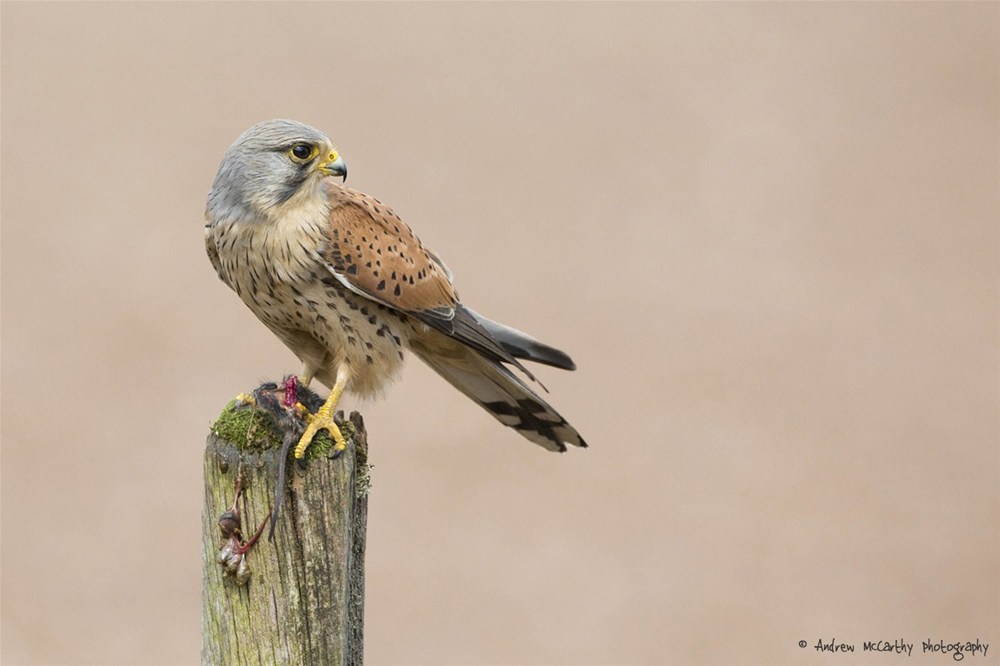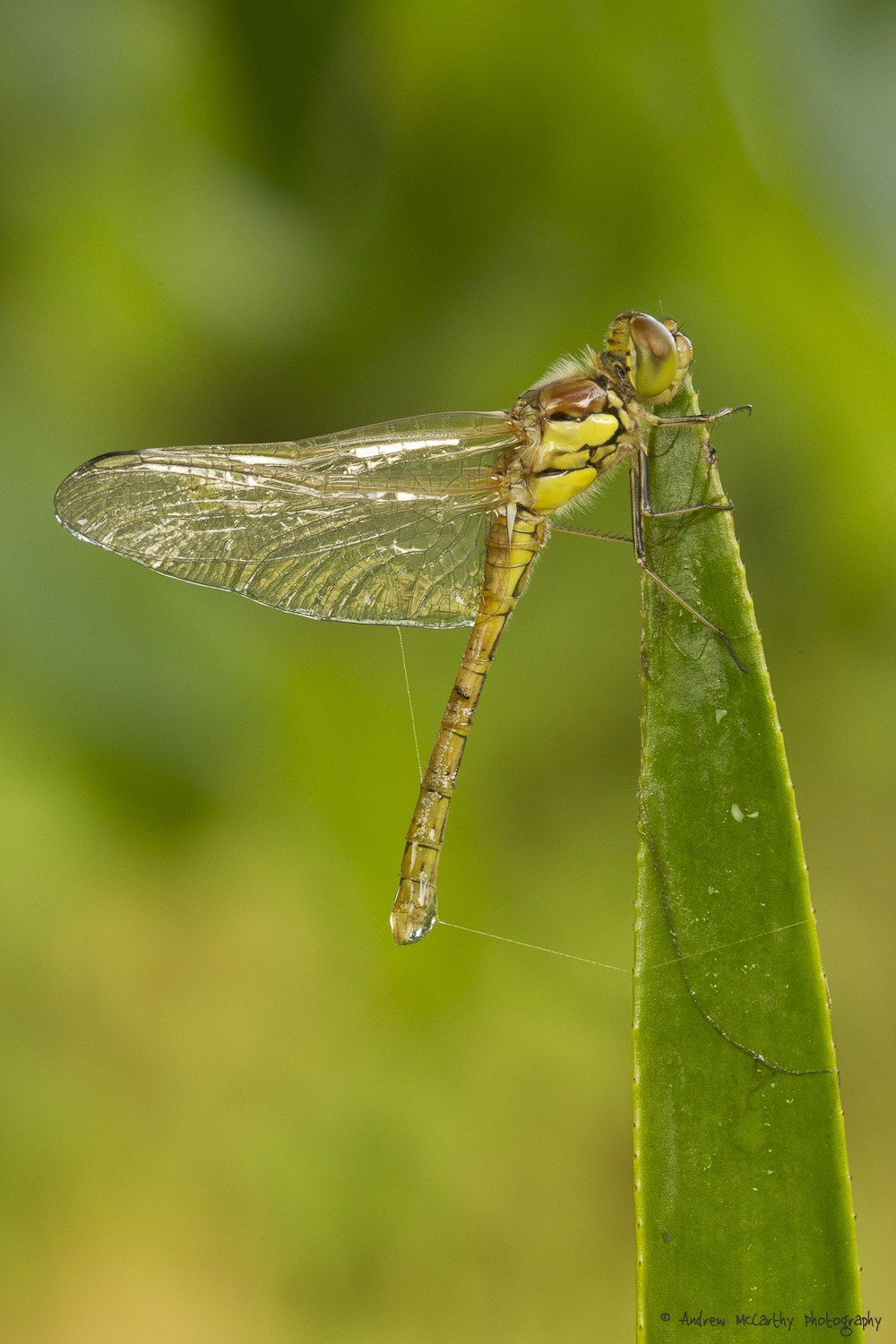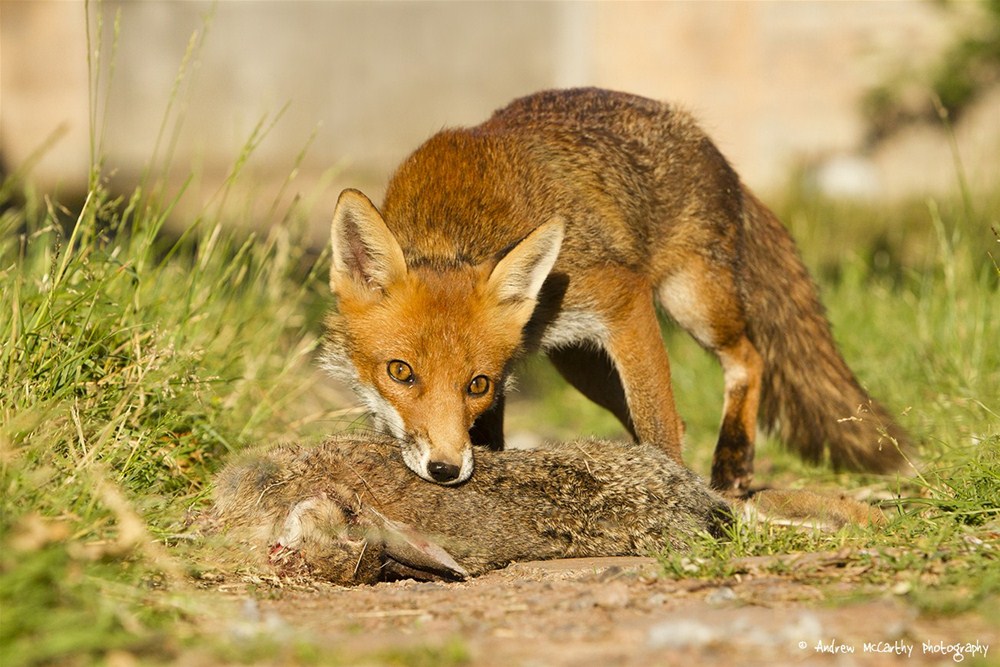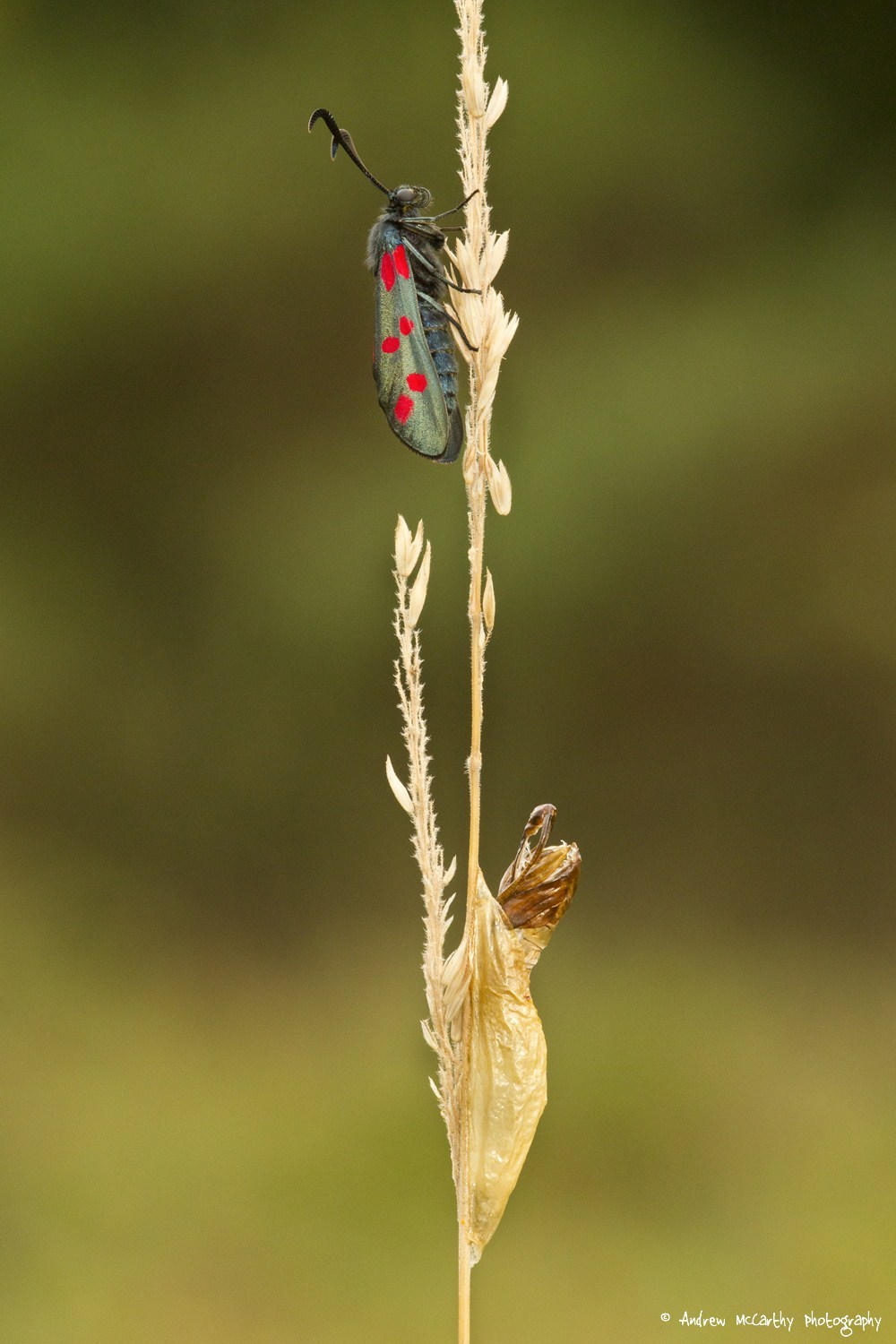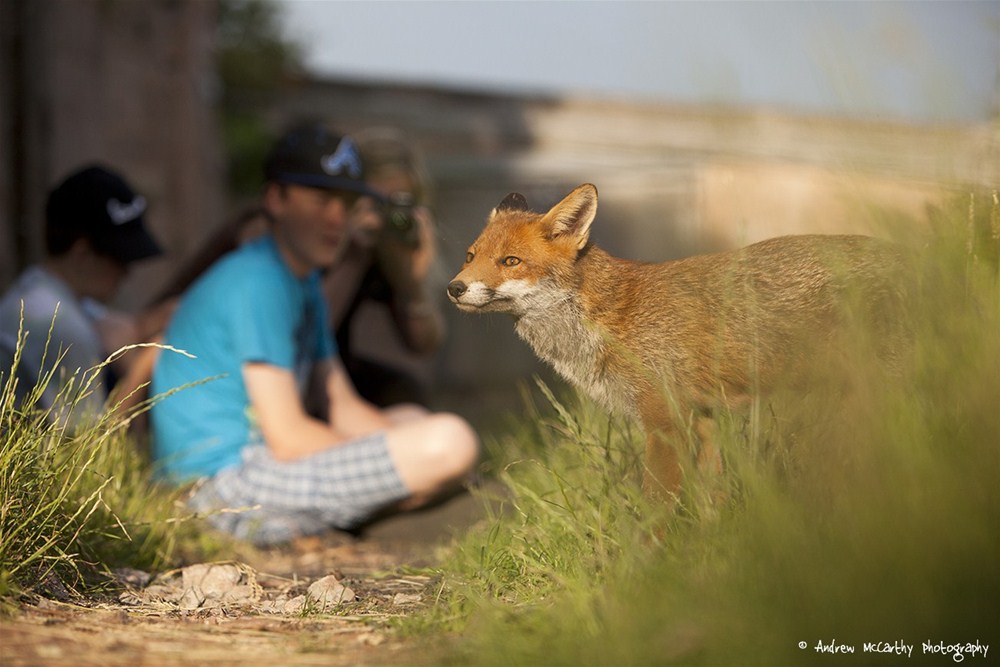Managed to get out this morning to photograph the common but rather beautiful, newly emerged 6-spot burnet months at a site I have worked for a while now for slow worms and adders, up on the Haldon Ridge and about 10 minutes from my home.
It is a roadside waste site and is botanically quite rich, so has plenty of ragwort, a key species for another iconic species – cinnabar moth; in this case the caterpillars. A lesson on working in poor light again – although the wind was fairly light – at least in the morning, the light was very patchy and from time to time was pretty horrible; flash needed to be used for most of this shoot.
As I said, I have been working this side for adders for a while now; I first came across this place a few years back when I was working in an Environmental Impact Assessment for a local road realignment and needed to trap and translocate reptiles, in particular adders, to this site from a location nearby.  Since then it’s developed into a really nice grassland and scrub site with a pretty good invertebrate diversity. Â
I have noticed though that recently a number of reptile heat ‘refuges’ have appeared in the grass, as well as dormouse tubes in the adjacent scrub. Â Clearly a local ecological consultancy is surveying this site, which in turn means the site is likely to be subject to a planning application sometime soon; IÂ guess I had better start looking round for another adder site!Â


